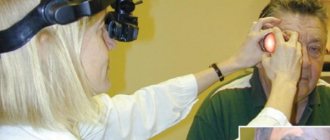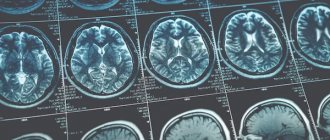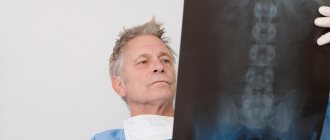Heroin is one of the most powerful drugs of our time. Despite the high price, it is widespread among drug addicts and is in particular demand among young people. It is a hard drug and people get used to it very quickly. Typically, two to three uses are enough to cause life-threatening consequences. Below we will tell you what heroin withdrawal is and how long it lasts. But let me tell you: this disease can be treated, so you don’t need to give up. By contacting our specialized clinic "Verimed", you can recover from drug addiction and return to a healthy lifestyle.
How does heroin work?
Heroin belongs to the category of semi-synthetic fast-acting drugs that affect not only the physical, but also the psycho-emotional state. To achieve a narcotic effect, heroin is used for smoking, in inhalation form (by inhalation), and also for intravenous administration. The injection method of administering the drug is the most dangerous, since the narcotic effect is observed after 20-30 seconds, and addiction develops in a short time.
Heroin, like other drugs, affects serotonin-sensitive receptors, which causes a feeling of happiness and euphoria. After the next dose is administered, a feeling of permissiveness and openness appears, and such a quality as sociability is activated. After a while, the addicted person stops feeling euphoria and loses interest in what is happening. The danger of any addiction, and in particular heroin addiction, is that tolerance to the drug quickly disappears, but it is replaced by addiction, the need for regular increases in the dosage of the drug.
In addition to the drug itself, the mixture called heroin contains additional impurities that negatively affect the human body.
Main manifestations of drug addiction
According to the generally accepted classification (according to ICD-10 criteria), individual forms of drug addiction are differentiated in accordance with the psychoactive substance that the patient uses (for example, mental and behavioral disorders associated with the use of opiates, stimulants, marijuana, sedatives). Polydrug addiction is considered separately.
However, there are several groups of symptoms characteristic of any form of drug addiction. This:
- Altered reactivity to the action of a particular drug: gradual development of tolerance (to achieve the desired effect a person needs to use an increasingly larger dose), changing the form of intoxication, “experiments” with different ways of taking a psychostimulant (for example, preparing injection solutions from a powder intended for inhalation, ingesting it orally etc.).
- Mental dependence. This is a condition in which a person needs to take a new dose of a drug to achieve emotional comfort. Without it, the addict feels dissatisfaction and dysphoria.
- Physical dependence. Its main symptom is withdrawal syndrome - a complex of specific physical and mental disorders that appear in the absence of a new dose of a narcotic substance.
- Consequences of drug addiction. Includes numerous complications from internal organs that developed against the background of chronic intoxication, exhaustion of the body, and personality degradation.
Consequences of heroin use
In addition to information on how to overcome withdrawal from heroin addiction, it is important to familiarize yourself with the consequences of addiction. Drug addiction does not go away without leaving a trace, both on a psychological and physical level.
The main consequences of heroin addiction include:
- A sharp increase in the risk of infection with viral hepatitis and HIV infection.
- Decreased immunity and high susceptibility to any infectious diseases.
- Severe damage to the cells of the liver, brain and cardiovascular system.
- Menstrual dysfunction in women and suppression of erectile function in men.
- Digestive disorders. Most often, heroin addicts experience chronic constipation.
How does withdrawal from heroin occur?
Until an addicted person misses the next dose, he does not know what kind of withdrawal from heroin awaits him, and how bad it can be. The so-called withdrawal, caused by a sharp refusal to administer the next dose of a narcotic drug, occurs in several stages. The predicted outcome of withdrawal treatment depends on factors such as the timeliness of seeking professional help, the duration of drug use, and the severity of addiction. Any person who becomes dependent on heroin goes through a withdrawal phase.
Stage 1
This phase of withdrawal from addiction begins already on the first day of absence of the next dose, when the effect of the drug has ceased. An addicted person has an urgent need for another dose. The main symptoms of the first stage of withdrawal include psychological discomfort, which is accompanied by apathy and a sharp deterioration in mood. At the first stage, anxiety is felt and sweating is activated. Sleep disorders are also observed, the person feels nervous and cannot sleep for a long time.
Stage 2
On the second day after stopping the drug, characteristic physical signs of withdrawal appear. In the initial stage, these symptoms resemble those of a cold. Characteristic signs include runny nose, chills, sneezing, watery eyes, and increased sweating. The alternation of chills and sensations of heat is also characteristic. A person feels tension in the muscles of the whole body, appetite disappears, the reaction of the pupils to light partially disappears, and they dilate.
Stage 3
On the third day, severe nausea appears, which can be supplemented by diarrhea and vomiting. The general condition of a person resembles food poisoning. The symptoms are complemented by physical impotence. There is also an increase in heart rate and an increase in blood pressure. Convulsive seizures may occur periodically.
Stage 4
This stage of heroin withdrawal is accompanied by the appearance of physical pain. This condition is associated with muscle, bone and joint pain. Another characteristic sign of stage 4 withdrawal is itching in the area where drugs were injected. When searching for a position that would relieve pain, a person does not find it. At this stage, self-control is lost and the instinct of self-preservation is suppressed. There is weight loss, the skin becomes pale or gray. The patient feels fear of imminent death. For as many days as heroin withdrawal continues, the person will be at risk of death.
Fig.: 4 stages of heroin withdrawal
Drug withdrawal syndrome: symptoms
As drug addiction develops and progresses, the addict’s body adapts to an almost constant state of intoxication. Therefore, the absence of the next “portion” first of all causes a compulsive, uncontrollable desire to take the drug. If for some reason this fails, systemic neurological and mental disorders occur.
Drug withdrawal develops 8–12 hours after taking the last dose of a psychostimulant.
The first stage of abstinence in drug addiction
At this stage, psychological manifestations come to the fore. This:
- the desire to take the drug at any cost;
- general state of dissatisfaction;
- internal anxiety, tension, anxiety;
- irritability, outright anger and aggression, which intensify many times over if they try to prevent the patient from using the drug.
Somatovegetative disorders are also characteristic:
- dilated pupils;
- chills, goose bumps;
- runny nose with sneezing;
- frequent yawning;
- disruption of the process of falling asleep;
- decrease or complete disappearance of appetite.
Second phase of withdrawal
All existing symptoms get worse. In addition, there is:
- discomfort, pain, stiffness in the muscles of the back, and subsequently in the neck, legs and arms;
- pain in the temporomandibular region, spasm of the masticatory muscles;
- lacrimation;
- convulsive twitching of individual muscles, tics;
- increased blood pressure, tachycardia;
- gait coordination problems;
- intolerance to loud sounds and voices.
Third stage of withdrawal
Possible psychomotor agitation. A person cannot find a place for himself, rushes aimlessly from room to room, lies down and gets up again. At first, physical activity helps relieve muscle pain, but then the discomfort intensifies.
The patient is irritated to the limit, tense, and sometimes there is a feeling of futility, hopelessness, and pessimism. Some addicts complain of pain in the abdomen, stool disorders, and discomfort in the chest.
Fourth phase
At this stage, drug addiction withdrawal symptoms reach their peak. Repeated vomiting and diarrhea often occur (up to 10–15 times a day), the development of generalized convulsive seizures is often noted, and motor and psychoemotional activity decreases.
How long does heroin withdrawal last?
Withdrawal from heroin lasts individually for each person. The increase in clinical symptoms continues for 3-4 days. Residual signs of the so-called withdrawal syndrome (without special medical care) may disappear only after 10-14 days. How long heroin withdrawal lasts depends on the duration of drug use, as well as the person’s general condition. Heroin addiction results in more severe withdrawal symptoms than other drug addictions.
There is also a list of residual symptoms of the so-called withdrawal syndrome in heroin addiction. Such signs include mental disorders, metabolic disorders, and sleep disorders. Such disorders can last for several months.
Content:
- Main manifestations of drug addiction.
- Drug withdrawal syndrome: symptoms: 2.1. The first stage of abstinence in drug addiction. 2.2. The second phase of withdrawal. 2.3. The third stage of abstinence. 2.4. Fourth phase.
- Peculiarities of withdrawal in various forms of drug addiction.
- Principles of treatment.
Abstinence is a consequence of an established drug addiction. This condition indicates that the use of psychostimulants has become systematic, and the person can no longer cope with it on his own. Withdrawal syndrome from drug addiction is fraught with the development of quite serious complications, therefore, with rare exceptions, it is an indication for mandatory hospitalization. After abstinence has been relieved, the addict is offered to continue treatment using various techniques of psychotherapy, coding and mandatory rehabilitation.
Getting out of heroin withdrawal at home
Regardless of how long a person has been dependent on a drug, he cannot avoid withdrawal symptoms in the absence of the next dose. It is important for relatives and loved ones of a drug addict to remember that withdrawal from heroin addiction is a serious condition that poses a direct threat not only to health, but also to human life.
Going through withdrawal from heroin at home is impractical and even dangerous. Effective treatment for drug addiction can begin in a drug treatment clinic. Relatives of an addict often make mistakes: they resort to using traditional medicine methods or, in a fit of desire to help the addict, they can offer another dose of the drug.
Relatives and loved ones of a drug addict in a state of heroin withdrawal should take into account the following nuances:
- In a state of withdrawal, a person is dangerous to the people around him, since he loses self-criticism and the instinct of self-preservation. When withdrawal from heroin develops, no matter how much they try to pacify the addict on their own at home, it turns out to be futile.
- If you show leniency towards a drug addict and provide him with a dose of the drug, then during the next withdrawal he will do everything possible to get the dose again.
- Medicines from the so-called home medicine cabinet are ineffective for relieving heroin withdrawal.
Alcohol also does not help relieve heroin withdrawal symptoms or alleviate a person’s general condition during withdrawal. A drug addict needs to undergo comprehensive treatment in a clinic and rehabilitation center. Drug addiction is a disease that requires treatment.
UBOR procedure
In severe situations, ultra-rapid opioid detoxification (UROD) can be used in a hospital setting. The procedure involves the use of general anesthesia. The drug addict is put into a state of medicated sleep, which allows him to not feel severe pain.
Advantages of the UBOD procedure:
- the possibility of rapid detoxification, active removal of metabolites in an accelerated manner;
- complete absence of sensitivity and pain;
- the person is in a state of deep sleep, the body recovers faster;
- The cleansing process takes about a day instead of 2 weeks.
The procedure is performed only in a hospital under the supervision of an anesthesiologist. After completion, the average recovery period takes 3-4 days. During UBOD, potent drugs and hardware methods of blood purification are used.
After detoxification, drug addicts often return to deadly addictions. Drug rehabilitation helps prevent relapse. Specialized institutions offer:
- comprehensive full-cycle programs for restoring psychological health, physical and social rehabilitation;
- unique methods of treating drug addiction and alcoholism;
- experienced doctors;
- drug treatment assistance at home;
- detoxification in a hospital.
are provided anonymously. You can find out more about the cost of treatment and sign up for a free consultation with a narcologist by calling our contact numbers.
Treatment at the clinic's inpatient facility
If a person has developed withdrawal from heroin addiction, only a narcologist can answer how to get rid of this condition. Professional withdrawal from a serious condition is carried out using special medications that improve physical condition and accelerate the process of removing drug residues from the body. Tranquilizers are prescribed to relieve pain and convulsive symptoms. In order to normalize the mental state, a short course of antidepressants can be prescribed, as well as amino acids that have a beneficial effect on the activity of the central nervous system.
In addition, cardioprotectors, hepatoprotectors, hormonal agents, psychostimulants, and multivitamin complexes are prescribed as part of maintenance therapy.
An important aspect of treatment is detoxification, which includes infusion therapy, hemodialysis, enterosorbents, and gastric lavage.
Psychological dependence
The disease drug addiction is complex; even the irresistible craving for a drug itself has two components: psychological and physical dependence.
As a rule, addiction is first formed in the psyche. It occurs for a reason; the patient has within himself a predisposition to develop the disease. Unfortunately, almost every person has mental characteristics that can lead to drug addiction.
If someone has problems with communication, with building harmonious happy relationships, achieving success and goals, we can say with confidence that behind this there are some complexes, fears, imposed beliefs and attitudes that prevent the person from being fully realized as a happy and successful person. In this case, the psyche is looking for a way to eliminate the problem, and usually there are two of them: solve the problem and forget about it.
Drugs allow you to do both. Of course, such a “solution” to a problem situation will be dubious, but at first, drugs, and heroin in particular, really help you loosen up, become more active, and even increase your status in some social groups. By clouding a person’s mind, they make it possible to completely erase problems from one’s head for a while.
So, after several uses, which at first bring euphoria and the illusion of resolving difficult situations, the human psyche becomes attached to the process of taking heroin and begins to identify it with something positive.
Socialization of a person after heroin withdrawal
After the improvement of physical condition, the stage of psychological rehabilitation and socialization begins after experiencing heroin withdrawal. This stage of recovery usually takes place in an inpatient rehabilitation center.
At a drug rehabilitation center, a person is helped by:
- understand the reasons for use,
- resolve intrapersonal problems,
- learn to cope with situations that lead to a breakdown,
- reconsider life values and goals,
- learn to build healthy relationships in the family and with others,
- if necessary, acquires professional and labor skills.
It is possible to undergo rehabilitation on an outpatient basis, but in 90% of cases this type of program does not allow the drug addict to achieve long-term remission. It’s hard for a person to be in an environment where everything reminds you of using. A drug addict regularly visits a narcologist, works with a psychologist and psychotherapist, and can attend group classes and auto-training that help reformat thinking and attitudes towards drugs.
Group classes are also organized for relatives of drug addicts. At such trainings, they teach the correct attitude to the problem of drug addiction of loved ones. Without moral support and care from relatives, it is difficult for a drug addict to overcome the craving for drugs and take the right path.
How is heroin addiction treated?
Treatment of drug addiction is a complex process based on the understanding that it cannot be cured in the generally accepted sense, only put into stable remission. To achieve this, narcologists resort to different methods of therapy.
- Detoxification therapy is aimed at mitigating acute withdrawal symptoms. The patient receives sedation and, if necessary, antidote therapy; opioid receptor antagonists may be used. The detoxification stage can be considered preparatory to full-fledged drug addiction treatment.
- Rehabilitation therapy. After detoxification, the patient receives drugs whose task is to restore the chemical and metabolic processes in the body to a level at least approximately equal to the level before taking heroin.
- Elimination of psychological dependence. Psychotherapy is necessary to ensure that the patient does not break down after getting rid of physical cravings. Drug addiction is a combination of physical and psychological dependence, so you need to act on two fronts at once.
- Social rehabilitation. The problem of many heroin addicts is their isolation from society and marginalization. Reintegration into society is one of the key stages of addiction treatment. This includes changing your environment, finding work and hobbies, and avoiding social isolation, which is often the root cause of starting to use.










